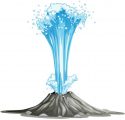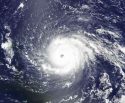 One of the most extreme forms of weather is the tornado. It is a funnel-shaped long column of rotating air at very high speed. They have the base at the ground and their top usually meets with cumulonimbus cloud. Tornadoes are known for their destruction which they cause; an average tornado can rip apart small buildings and can lift and throw cars at great distances.
One of the most extreme forms of weather is the tornado. It is a funnel-shaped long column of rotating air at very high speed. They have the base at the ground and their top usually meets with cumulonimbus cloud. Tornadoes are known for their destruction which they cause; an average tornado can rip apart small buildings and can lift and throw cars at great distances.
Formation of a Tornado
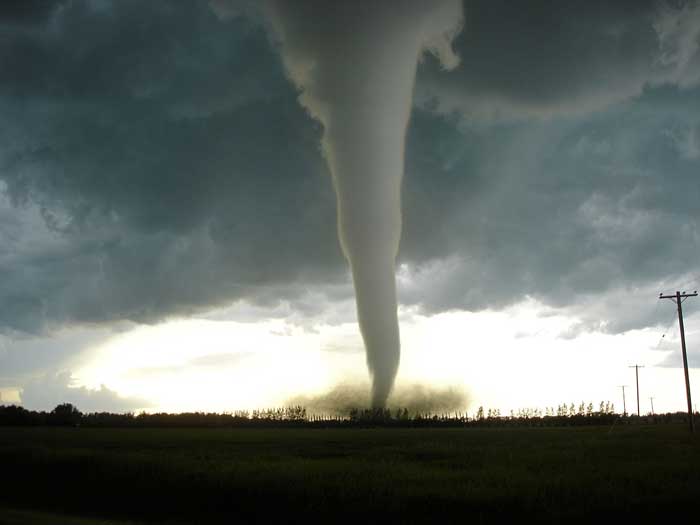 Tornadoes occur in various sizes and most of them are so small that their effects are negligible. The most destructive tornadoes are very big in size and mostly occur along with cumulonimbus cloud – a heavy thunderstorm cloud. However, thunderstorms alone are not sufficient for the occurrence of mighty tornadoes. There are various conditions which must be met along with cumulonimbus Clouds to form a large tornado.
Tornadoes occur in various sizes and most of them are so small that their effects are negligible. The most destructive tornadoes are very big in size and mostly occur along with cumulonimbus cloud – a heavy thunderstorm cloud. However, thunderstorms alone are not sufficient for the occurrence of mighty tornadoes. There are various conditions which must be met along with cumulonimbus Clouds to form a large tornado.
Let’s discuss the steps and the conditions which are necessary for the formation of a tornado step-by-step:
- There should be large thunderstorm clouds – typically cumulonimbus cloud. But in rare cases, cumulus is also the cause.
- Changes in the direction of the wind at lower and higher altitudes cause the air to swirl horizontally.
- Hot air that rise from the ground pushes the swirling column of air upward and makes it in a funnel The funnel-shaped rotating air further sucks more warm air and grows bigger.
- The swirling air rotates very fast and stretches the tip of a tornado at the ground.
- The formation of tornado completes when the tip of a funnel touches the ground.
Parameters of a Tornado
There are various parameters which characterize a tornado and distinguish one tornado from others. These parameters are:
- Size: It is one of the important parameters of tornadoes that define how much impact they can make. There are various sizes of tornadoes that can be as little as one foot wide or more than a kilometer wide. But the typical size of tornadoes averages at 500 feet in the United States, but it may vary in other regions of the Earth.
- Shape: Tornadoes of smaller and middle sizes are mostly in a funnel But as their size grows, they can’t maintain their funnel shape and may look like a wedge or other shape similar to funnel.
- Wind Speed: It is also the important parameter which defines the speed of wind swirling in a tornado. The wind speed of a tornado varies as the atmospheric conditions change, but the typical range of speed is 65 to 250 miles per hour.
- Color: Tornadoes also have a color range due to the condition of the environment where it is formed. Tornadoes mostly have a white, gray, and red color, but they can also be invisible if the environment contains less amount of dust.
- The direction of Rotation: Tornadoes are rotating air column and the direction of their rotation depends on the region of their formation. If they are formed in northern hemisphere they rotate in counterclockwise as seen from above, but they rotate clockwise in the southern
Types
There are many types of tornadoes other than classic gray tornadoes. These tornadoes have different characteristics and are formed around the world. These are multiple vortex, waterspout, and landspout tornadoes.
Multiple Vortex Tornado
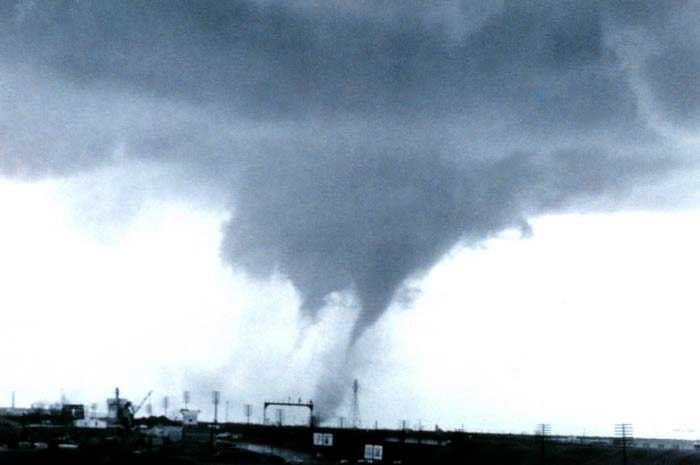 A multiple vortex tornado is a group of tornadoes that contains two or more tornadoes. These tornadoes spin separately but they rotate around a common center. This particular multi-vortex structure mostly appears in very intense tornadoes.
A multiple vortex tornado is a group of tornadoes that contains two or more tornadoes. These tornadoes spin separately but they rotate around a common center. This particular multi-vortex structure mostly appears in very intense tornadoes.
Waterspout Tornado
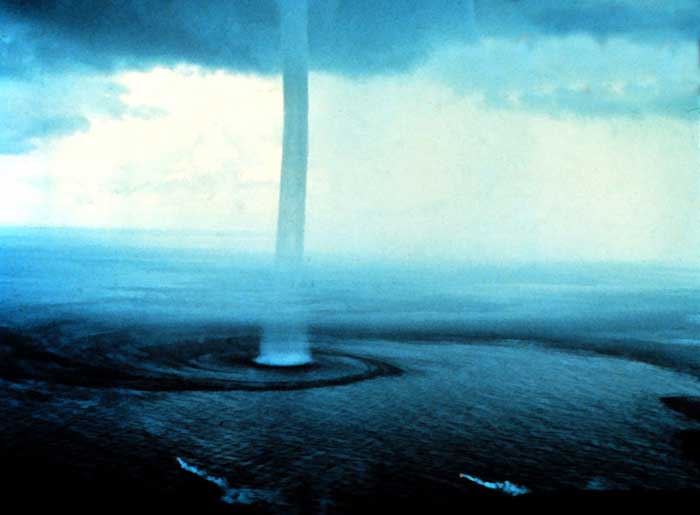 Waterspout tornado is a type tornado that only forms over water such as oceans, seas, and Lakes. The most likely places of their occurrence are tropical and subtropical water regions. Waterspout tornadoes are very slow moving and have slower wind speeds as compared to tornadoes on the land.
Waterspout tornado is a type tornado that only forms over water such as oceans, seas, and Lakes. The most likely places of their occurrence are tropical and subtropical water regions. Waterspout tornadoes are very slow moving and have slower wind speeds as compared to tornadoes on the land.
Landspout Tornado
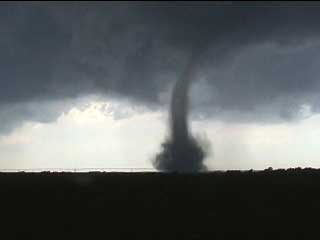 Landspout tornadoes are very similar to waterspout tornadoes but they are formed on the land. They have many parameters in common with waterspout tornadoes such as low wind speed, smaller in size, and smaller lifespan. They are much weaker and different than the classic tornadoes and sometimes don’t reach the surface of the Earth at all. But they have the ability to produce strong winds that may cause the destruction of smaller houses.
Landspout tornadoes are very similar to waterspout tornadoes but they are formed on the land. They have many parameters in common with waterspout tornadoes such as low wind speed, smaller in size, and smaller lifespan. They are much weaker and different than the classic tornadoes and sometimes don’t reach the surface of the Earth at all. But they have the ability to produce strong winds that may cause the destruction of smaller houses.
Where Do Tornadoes Occur?
Tornadoes are not limited to just a few regions of the Earth; wherever the conditions of their formation are met, there are formed. They have caused many destruction around the world, but in the United States, they are frequently formed in Tornado Alley.
Facts
- People call tornadoes with various names around the world but the most famous names are cyclone, funnel, and twister.
- Every swirling column of air is officially not called a tornado until it touches the surface of the Earth.
- Whenever you encounter a tornado, try to find a safe shelter. Because racing against a tornado may be risky because they usually travel at a speed of 50 kilometers per hour – sometimes 100 km/h.


